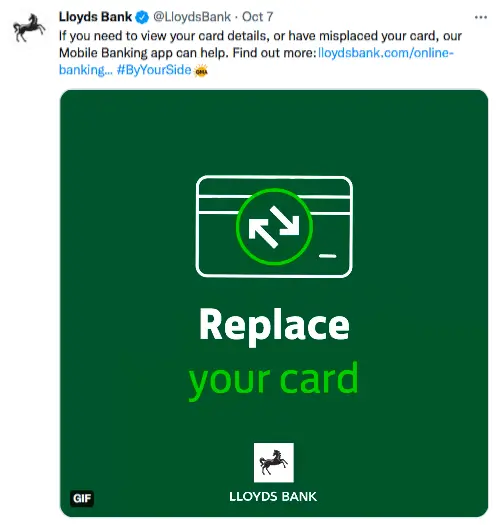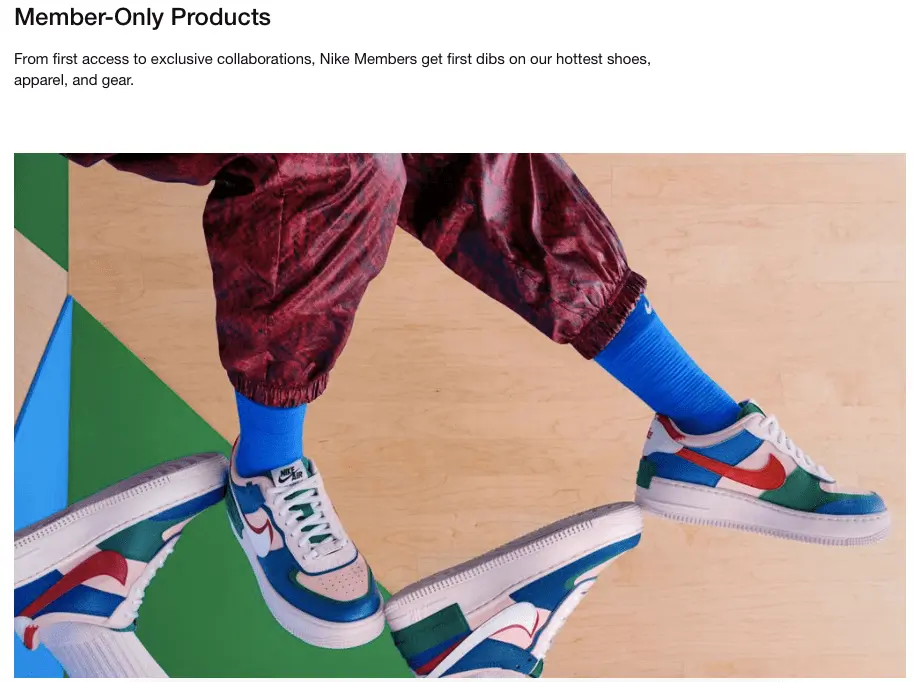What is omnichannel marketing, and how does it differ from multichannel marketing? Let’s find out.
In the modern world, convenience and fantastic customer experience (CX) go hand in hand. It’s why, as a consumer, your best experience of a brand usually occurs when their approach is clear, consistent, and connected. Whether you’re using their app on your phone, browsing their website on your computer, or shopping in their high street store, an integrated encounter should be convenient and easy for the customer, while helping build loyalty for the brand.
Effective and fully integrated customer experiences are usually so seamless that you won’t even notice them. That doesn’t mean they magically happen on their own, however. Underpinning this is what’s known as omnichannel marketing.
But what is omnichannel marketing? And is it absolutely essential? If you’re dipping your toe into digital marketing for the first time, this post will cover everything you need to know.
We’ll answer all your questions, including:
- In a nutshell: What is omnichannel marketing?
- What’s the difference between omnichannel marketing and multichannel marketing?
- What are the benefits of omnichannel marketing?
- What are some real-world examples of omnichannel marketing?
- Six steps for devising an omnichannel marketing strategy
- Wrap up and further reading
Ready to find out what omnichannel marketing is? Let’s dive in.
1. What is omnichannel marketing? A definition
OK, we’ll admit it…The term ‘omnichannel’ sounds like a bit of a buzzword, right? So let’s break things down. Firstly…
What does “omnichannel” mean?
The word omnichannel comes from the Latin Omnis, meaning every/all, and channel, which in this context describes all the different ways you can interact with a brand. For instance, your mobile device is a channel, as is your computer, as are the websites, apps, chatbots (and so on) that you might use to interact with a brand. If you shop in-store or seek customer support over the phone, or receive an email promotion, these are all channels, too. The list goes on! So omnichannel essentially means ‘every channel.’
What is omnichannel marketing?
Omnichannel marketing pulls together all of an organization’s marketing efforts into an integrated, consistent brand experience across all channels. This means that their messaging and tone, their visuals and graphics, as well as any prior interactions that a customer has had with them are harmonized. For instance, if you want to buy something online and pick it up in-store, this would be one example of omnichannel marketing.
Executed well, an omnichannel marketing strategy should go almost unnoticed by the customer. Their experience should be so seamless that all their needs are met as they arise. In reality, a customer is more likely to notice a badly executed omnichannel marketing strategy. Ever found yourself frustrated by your interaction with a brand? Perhaps you sought out support, found their social media accounts friendly and helpful, but then their customer service phoneline let you down? That’s a great example of when an omnichannel approach goes wrong.
Omnichannel marketing might sound like a simple concept but it’s not as straightforward as it seems. A seamless omnichannel approach is the holy grail of many brands. Alongside this, it’s becoming ever-more complex to execute, as an increasing number of channels—particularly digital ones—emerge. The number of pathways and journeys an individual customer can now take—whether purchasing a product or simply getting support—has made the task of creating and delivering a successful strategy all that more challenging. The next time you have a positive engagement with a brand, spare a thought for those hard-working marketers… because it didn’t happen by coincidence!

2. What’s the difference between omnichannel marketing and multichannel marketing?
As well as omnichannel marketing, you might have come across the term ‘multichannel marketing.’ So what’s the difference between the two?
Omnichannel marketing vs. multichannel marketing
The difference between omnichannel marketing and multichannel marketing lies primarily in what they aim to achieve. On the face of it, they share many similarities. There are ongoing debates—even among seasoned marketing professionals—about how significant the differences between them are. This is because both strategies rely on using more than one channel. But dig a little deeper, and we can see that their goals are quite different.
Omnichannel marketing
Omnichannel marketing is a customer-centric strategy. It aims to identify all the different channels a customer uses, collecting data to understand how, why, and when they might interact with a brand. Once this research is done, the task is to create a personalized customer experience that’s entirely seamless, meeting all of the customer’s needs in the most integrated and unified way possible.
While omnichannel marketing strategies traditionally take place on and offline, they’ve become an increasingly common facet of digital marketing. You may find that the term ‘omnichannel’ sometimes refers specifically to digital marketing efforts, which are increasingly dominant in the customer journey. Something to keep in mind!
Multichannel marketing
Unlike omnichannel marketing, multichannel marketing is a brand-centric strategy. While it also relies on using many different channels, the primary aim of multichannel marketing is to promote a singular and specific brand message. It is, therefore, less about creating a unified experience based on the customer’s needs and more about telling the customer what the brand wants them to hear.
The aim, in this case, is usually to create engagement; something that takes priority over a consistent CX. Multichannel marketing is usually about encouraging a customer to complete a call to action, e.g. ‘buy our burgers’, or ‘subscribe to our streaming service.’ Brands adopting a multichannel approach might use billboards, social media, paid online advertising, and so on, to achieve this goal.
Traditionally, once a campaign is complete, the multichannel approach usually ceases. However, for smaller brands that lack the resources to roll out a truly omnichannel strategy from the word go, adopting a multichannel strategy is increasingly being taken as a stepping stone towards further integration.

3. What are the benefits of omnichannel marketing?
Today’s consumers are far more marketing savvy than they used to be. This is partly because there are so many more ways in which brands can reach them. Brands use tactics like SEO, social media marketing, videos and blogs, magazines, apps, promotions, and more. With all this exposure, consumers are increasingly wise to what is effective (and what is ineffective) marketing.
However, because more and more brands are adopting omnichannel strategies, customers have become accustomed to high-quality, personalized experiences that work from end to end. When the CX is substandard, consumers have a much lower tolerance. In short, they will quickly move on to a new brand or provider. As a result, omnichannel marketing is not just nice to have—it’s absolutely necessary when competing with other brands.
Here are few more reasons why omnichannel marketing is so important:
- Omnichannel marketing is customer-centric: OK, so we’ve hammered this one home already, but customer-centric marketing is what it’s all about. In the 21st century, it’s a no-brainer that the customer knows far better what they want from a brand than a room full of company executives. Create an experience that’s focused on the customer’s needs and you will retain their loyalty. That’s better for the customer, yes, but it also means more revenue for the brand.
- Omnichannel marketing boosts brand identity: While the first aim of an omnichannel strategy is to improve the CX, it has a positive impact on brand recall, too. A consistent identity across all channels makes a brand more recognizable. Customers with access to all the information they need, when they need it, will also be able to define your values more easily. Clear messaging, sleek visuals and positive experiences stick in people’s minds better than a bitty, piecemeal approach.
- Omnichannel marketing improves return on investment: OK, so the CX is important, but so is the bottom line. Fortunately, these go hand in hand. Adopting a good omnichannel strategy increases the customer lifetime value (CLV). The CLV is an important metric that measures a customer’s total worth to a business over the entire course of their relationship. The ideal omnichannel approach will boost the level of engagement, customer loyalty, and subsequently, the number of customer purchases. All this will create greater revenue in the long run.
- Omnichannel marketing improves data quality: Central to determining your omnichannel strategy is collecting and analyzing the appropriate customer data. But adopting an omnichannel approach—particularly in digital marketing—will also allow you to collect and store new data more efficiently. No more downloading CSVs from your email marketing provider and deduping the content against existing spreadsheets or your customer relationship management (CRM) system! A unified approach should work both for the company as well as the customer. You can collect data from across all platforms, integrating these into one location. Ultimately, this will make future analytics tasks more accurate and straightforward to carry out.
- Omnichannel marketing keeps you at the cutting edge of tech: In our high-tech world, brands that fail to keep up with technological developments quickly fall behind. Yet, with so many competing priorities and budgets, a surprising number of companies manage to do just this. Adopting an omnichannel approach means always being at the cutting edge, for the simple reason that customers will expect it. By simply responding to their needs, companies will develop a culture of adaptation. This allows them to leverage the latest technological advances and platforms as they inform future marketing efforts.

4. What are some real-world examples of omnichannel marketing?
To help bring the concept to life, this section highlights some successful brands that have nailed their omnichannel marketing strategies. Let’s dive in.
Lloyds Banking Group

The finance sector is where omnichannel marketing was born. It emerged from a desire to unleash customers from banking in branches. Many banks are now closing their bricks-and-mortar branches, while other 100% digital banks are emerging. However, Lloyds Banking Group in the UK isn’t following either tactic. Instead, they’ve chosen to straddle the space between the two, adopting a truly omnichannel approach.
One of the UK’s oldest financial institutions, Lloyds Banking Group serves customers right across the UK. Founded in the 1700s, Lloyds has spent the vast majority of its history as a bricks-and-mortar bank. However, with the dawn of the internet, the bank quickly understood that they would need to keep up with customer expectations. In addition to high street branches, Lloyds Banking Group now has mobile apps, as well as online and telephone banking. Although this isn’t unusual for banks these days, what sets Lloyds apart is the increasingly complex number of services that are available through these channels.
In 2018, the bank announced a £3billion investment to fund new digital technologies such as the cloud, machine learning, and advanced analytics. The investment seems to be paying off. The move to cloud tech has led to a 30% reduction in the time it takes to deliver new features, while more than 50% of customer transactions now utilize machine learning algorithms. All of this has led to greater customer personalization, showing us exactly how it’s done!
Starbucks

It’s not a huge surprise that omnichannel is also a big deal in retail. Perhaps one of the best examples of this comes from the global coffee chain, Starbucks. Being a very famous and well-advertised brand helps drive new customers into Starbucks stores. But this is just the start of the omnichannel journey.
If you’ve ever been to a Starbucks store (or even just walked past one) you’ll know that the in-store experience is unique—the visuals, the branding, the scents and sounds, the scribbled names on cups—it’s all highly distinctive. None of this is accidental. After purchasing a coffee, customers are usually signed up for the company’s newsletter. This offers them discounts and deals, but also encourages them to download the Starbucks Rewards app, which offers further deals and promotions, completing the omnichannel circle.
Beyond just promotions, the app offers customers further bonuses, such as queue jumping in-store. And because it tracks individual user data, Starbucks can personalize promotions to each customer based on their buying habits and even the weather (cold drinks promotions on sunny days, for example). Love them or loathe them, Starbucks is truly an exemplar of how to get your omnichannel marketing strategy bang on.
Nike

The world-famous ‘Just Do It’ brand seems to have taken its own slogan very seriously when it comes to adopting an omnichannel marketing strategy. Similar to Starbucks (and others) the NikePlus app, which launched in the mid-2010s, prioritizes customer loyalty above all else. Their broader suite of apps has helped reposition Nike not just as a provider of popular sporting products, but a trusted fitness advisor and provider of all sorts of sporting accessories.
The NikePlus app does more than offer customers ‘percentage off’ deals. Instead, it offers them exclusives, too. And this investment has contributed to 35% growth in Nike’s digital revenue. It doesn’t stop in the digital sphere, either—Nike rewards loyal customers in-store, with perks like express checkout, special opening hours for members, and even a members-only floor at its flagship store in New York City. Personalized customer services such as bra fittings and analysis of athletic performance all add to the CX and positioning of Nike as a trusted expert. Bringing all these threads together, Nike’s omnichannel marketing experience has secured its position as one of the world’s coolest and most successful brands.
5. How to devise an omnichannel marketing strategy: Six steps
We now know what omnichannel marketing is, what it involves, and why it’s so important for modern brands. But how would you go about devising an omnichannel marketing strategy? Not everybody has the resources of brands like Nike or Starbucks, but even small companies can make a start.
Here are six basic steps you’ll need to take to begin with your omnichannel marketing strategy:
1. Collect data
The first step in any digital or omnichannel transformation is to collect data on existing and prospective customers. This will help you understand what makes them tick. Data in this context might include anything from the devices customers use to the kinds of content they’re most likely to engage with, the social media platforms they prefer, and what products and services they want to purchase. It’s important to understand all their usual touch points with a brand and what activities convert them into loyal customers.
2. Analyze data
Once you’ve collected data on your prospects and customers, you’ll need to start exploring these data for insights. This might be your job as a digital marketer, or you may be lucky enough to have a dedicated team of digital marketing analysts to support you.
Either way, the main aim is to identify the patterns and trends that will shape the unique aspects of your omnichannel approach. If your organization doesn’t already use one, you’ll need to adopt a data analytics platform to help store and report on data. Being able to update data streams in real-time will also allow you to adapt your approach once you’ve launched your strategy.
3. Customer journey mapping
The key to any omnichannel marketing strategy is understanding that each customer journey is unique. Based on the outcome of your data analysis, you should start to segment your customers and prospects. These segmentations might be based on different demographic groups, buyer personas, the paths that prospects take to purchasing a new product, the customer lifetime value of each demographic, and so on. The exact characteristics determining how you segment your customer base will be unique to your brand and specific goals. But defining the customer journey is a fundamental aspect of developing your strategy further.

4. Develop and roll out brand guidelines
If you’re a start-up organization, you might not have brand guidelines yet. And if your organization has been around for a while, you might. Either way, now it’s time to create or update your brand guidelines based on your data analysis and customer journey mapping.
Brand guidelines should include visuals, the tone of voice required for written communication and advertising, as well as social media guidelines, and how to apply all these in different contexts. Once your brand guidelines are in place, you’ll be ready to start rolling them out across all the different elements of your strategy, from apps to content, in-store or online. This is a vital aspect of developing a consistent customer experience.
5. Track metrics and amend your strategy
Step one was to collect customer data, but don’t think the job stops there! Part of your omnichannel strategy will involve developing protocols for continuous data collection. This will allow you to track important marketing metrics and key performance indicators to guide your strategy moving forward. With a continual stream of data and up-to-date reporting, you can adapt and evolve your omnichannel approach, changing course when necessary using actionable, data-driven insights.
6. Keep it personal
Whatever your brand’s specific objective, and whatever practical elements make up your omnichannel approach, always keep in mind the ultimate goal: to create a unified experience for the customer. Things like visual branding may be pretty consistent across your customer base but never fall into the trap of treating all customers as a homogenous group. To the best of your ability, with whatever resources you have at your disposal, do your best to create individual connections and personalized experiences for each customer or prospect. Automation tools can help here, as can data analytics, not to mention personalized content, promotions, and deals.
A great brand experience will convert more prospects into loyal customers. More conversions mean improved return on investment. And underpinning all of this is the need to keep things personalized.
5. Wrap-up and further reading
So there we have it: omnichannel marketing in a nutshell!
In this post, we’ve looked at what omnichannel marketing is, why it’s important, and what tactics it involves.
While it might seem like a true omnichannel marketing strategy is the preserve of large multinational brands with bottomless coffers, that’s not the case. Even small companies can make in-roads using this approach. Keep in mind that few organizations roll out their entire omnichannel strategy overnight and that developing a fully unified omnichannel approach takes time. So, start small, achieve what you can with the resources you have available, and remember: stay focused on the customer. As you move forward, you can add new strands and channels to your strategy.
Interested in the field of digital marketing? Why not try out this free, self-paced course?
For more introductory marketing topics and additional digital marketing techniques, check out the following:
